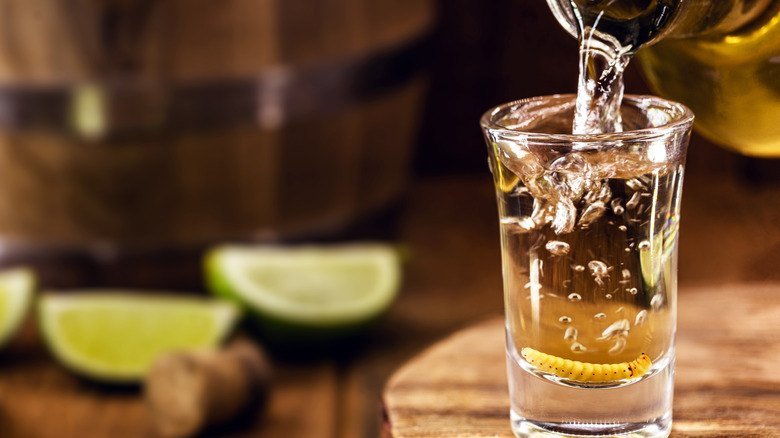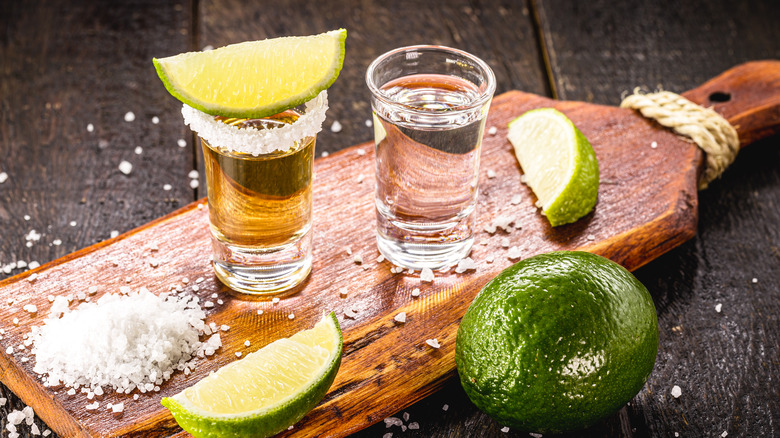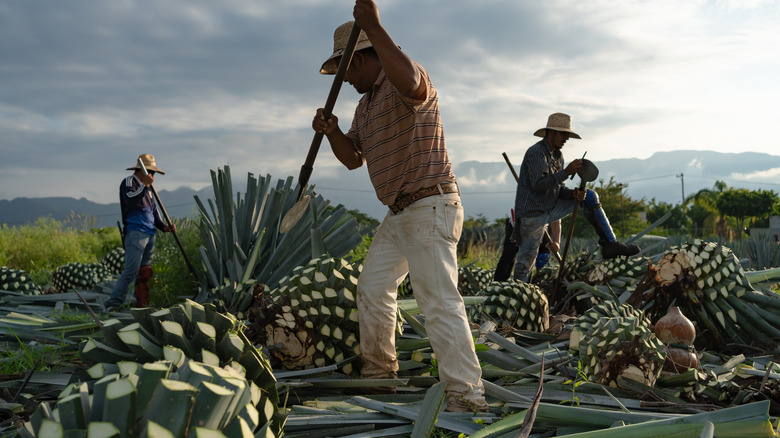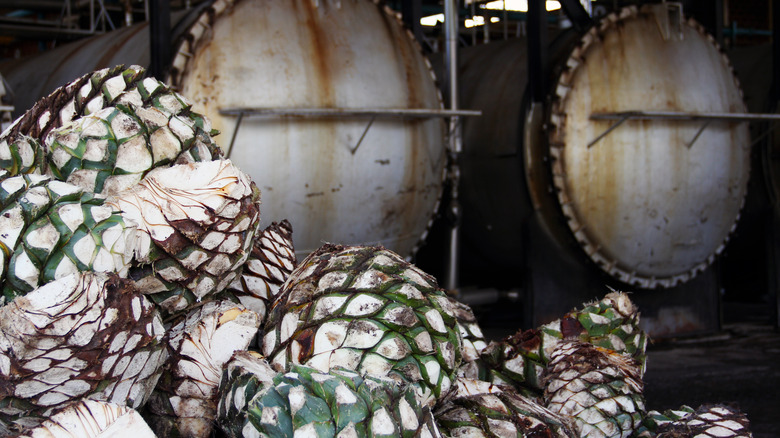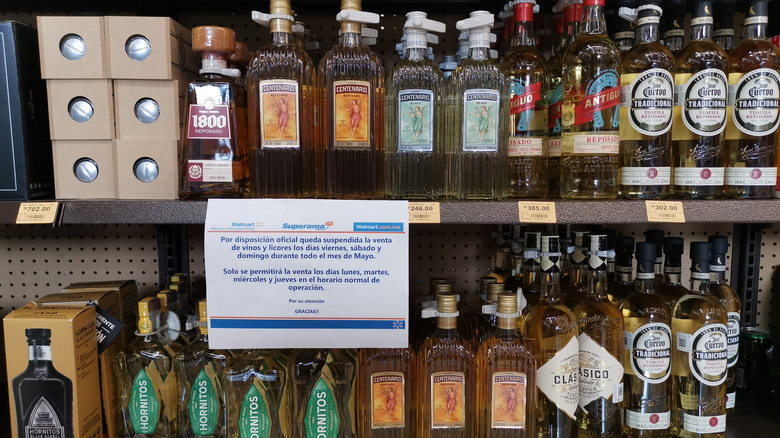The Truth About 'Tequila' Made Outside Of Mexico
Paired with a wedge of lime, a smattering of salt, or mixed with ice and sweet and sour mix for a margarita, tequila consumption in the United States is usually about disguising the taste of the spirit. However, in Mexico, tequila has an entirely different connotation and there's a different practice surrounding its consumption. According to Cookist, "good tequila is actually sipped and not slugged down at once." They say that it's customary to enjoy it by having "100% agave tequila filled in a shot glass and then by taking small sips of it." The Daily Meal says forget the shot glass: Good agave tequila should be enjoyed from a snifter like a scotch.
One big difference in the flavor and quality of tequila is where and how it's made. If you're buying tequila that isn't made in Mexico or isn't made with the specific plant varietal that's required of tequila, chances are that it's not actually tequila that you're sipping.
What is tequila?
Tequila is a distilled spirit made from the agave plant. More specifically, it's made from the blue tequilana weber agave, a plant native to the western Mexican state of Jalisco (via Refinery29). While there are over 220 different types of agave that grow in Mexico, true tequila is only made with one type of agave plant grown in certain regions of the Jalisco state. According to Decanter, the five Mexican states that can legally produce tequila include Jalisco, Guanajuanto, Tamaulipas, Michoacan, and Nayarit.
Tequila has been around since the 16th century, when Spanish conquistadors ran out of their supply of brandy and decided to couple their knowledge of distillation with the Aztec's practice of creating pulque, "a cloudy, slightly sour tasting alcohol drink made from the extraction of the sweet sap from [agave] hearts and fermenting it," Decanter explains. The result was the unique and delicious spirit we know and love today.
How is tequila made?
Tequila is made using the blue agave plant, which is harvested by jimadores who hack at the outer leaves until they can harvest the heart, or piña, of the agave plant (per Izkali Tequila). The agave hearts are then cooked within brick ovens or stainless steel autoclaves, which Izkali Tequila explains create simple fermentable sugars out of complex carbohydrates. The cooked piñas are then crushed to extract the juice from the plant to be fermented.
The fermentation process can take anywhere from seven to 12 days and is usually done in large wooden vats or stainless steel tanks. Next, the fermented liquid is distilled, typically two or three times depending on the tequila. Once the liquid is distilled, it's ready for aging. Unaged tequila, or tequila blanco, is finished after the second distillation and ready to be bottled. Reposado and añejo tequilas are placed into barrels (usually French or American white oak barrels that have been used with bourbon, according to Izkali Tequila), where they'll sit for 2-12 months (reposado), 1-3 years (añejo), or for over three years (extra añejo).
Mexican tequila vs. other tequila
Mexico is actually the only place where tequila can be made, so Mexican tequila is the only type of true tequila available. Even within Mexico, there are only a few regions where the spirit created from the blue agave plant is allowed to be called tequila. "Anything else made with Blue Weber Agave outside these areas, or from agave that is not Blue Agave, is not legally tequila," according to Vine Pair.
Spirits made with blue agave outside of these regions in Mexico are usually labeled as something distinctly less inviting than "tequila;" they're usually called "spirit produced/distilled from 100% Blue Agave." Vine Pair reports that there have even been attempts to name non-tequilas to draw unsuspecting consumers in — such as the Temequila spirit produced in Temecula, California. However, these liquids just aren't tequila.
So if you're really looking to enjoy a good tequila properly, make sure you're buying one that's made in Mexico, otherwise, you won't be enjoying true tequila at all, but a knock-off made by someone else trying to replicate this Mexican spirit. If you're looking to get into sipping tequila rather than just knocking it back, we recommend trying a reposado or añejo tequila.
Where can you buy true Mexican tequila?
Buying true tequila in the United States isn't a tough undertaking — you just need to be aware of what you're looking for and be sure to read the labels of the spirits before you buy them. For the best and truest taste, look for tequila that is 100% blue agave, rather than anything labeled "mixto." Most liquor stores and grocery stores will carry true tequila, as it's only growing in popularity. (Tequila sales grew from 20.1 million to 23 million 9-liter cases between 2019 to 2020, per Statista).
According to Thrillist, a few other things to look for when buying authentic Mexican tequila include a label saying "Made in Mexico" or "Hecho en Mexico." You'll also want to look for the letters CRT, which stand for Consejo Regulador del Tequila, which is the regulatory agency that oversees the production of tequila. If it doesn't have this label, it's probably not real Mexican tequila.
